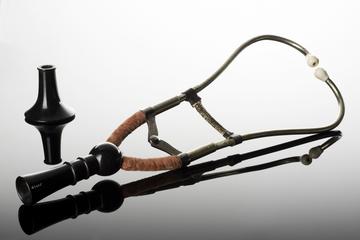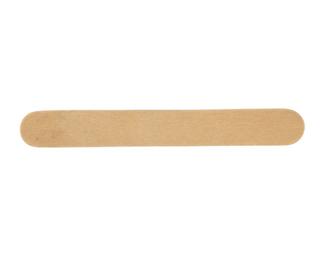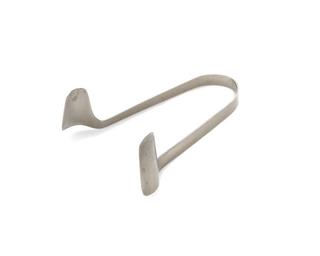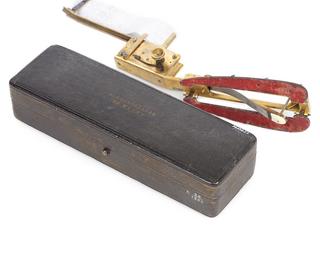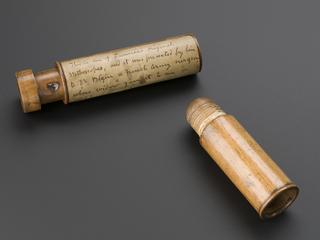




Specimen bottle, Wassermann outfit in square wooden tube, supplied by Kent County Council, English, 1930-1950
This glass bottle was used to take a blood sample and test for syphilis, a sexually transmitted infection. August von Wassermann (1866-1925), a German physician and bacteriologist, developed this diagnostic blood test in 1906. Shortly afterwards Paul Ehrlich and his team developed a cure for syphilis known as Salvarsan, the so-called ‘magic bullet’. This required, however, a long period of treatment and was later replaced by the use of antibiotics such as penicillin.
Details
- Category:
- Clinical Diagnosis
- Collection:
- Sir Henry Wellcome's Museum Collection
- Object Number:
- A608076
- Materials:
- case, wood, lid, metal, bottle, glass and stopper, rubber
- Measurements:
-
overall: 22 mm x 158 mm x 23 mm, 0.03kg
- type:
- test tube
